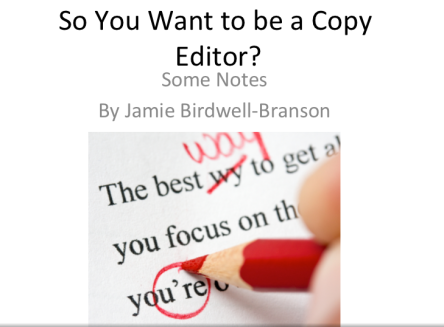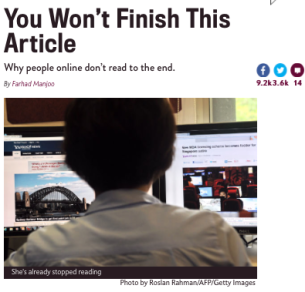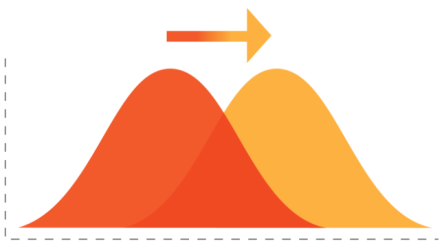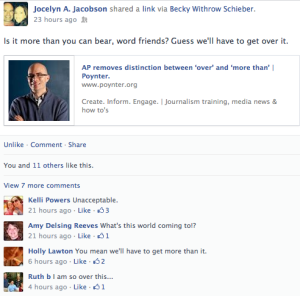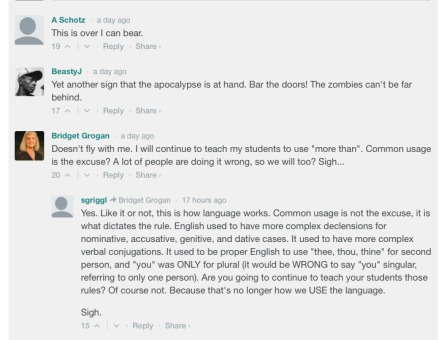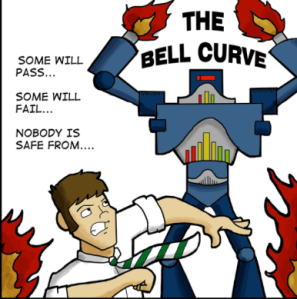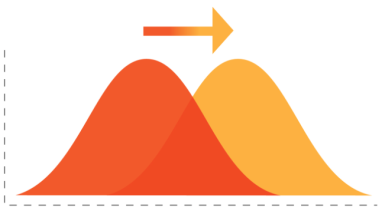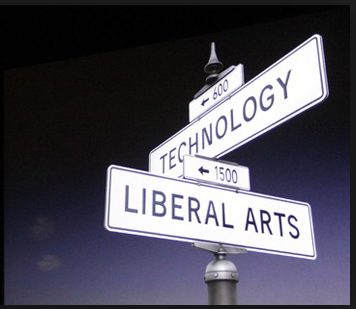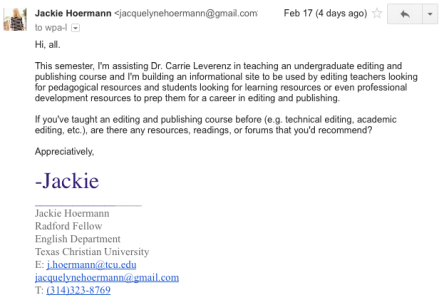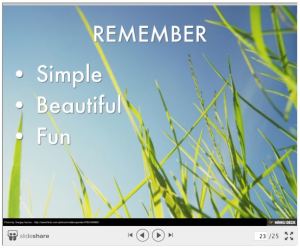A teacher’s advice can go far, but sometimes it has a stopping point. In past classes I’ve taught, I’ve felt like students have heard but not always listened to my advice.
What drives the point home is an outside, credible second opinion from another expert.
This week we sought such an opinion. Twice. Our experts were two editors with two very different backgrounds. We have a third expert coming next Wednesday.
Expert one came on Monday, Mrs. Jamie Birdwell Branson, content copyeditor at Thomson-Reuters.
To start, we went around the room and had each student tell Jamie the most significant editing lesson she or he has learned thus far. Favorite lessons included “look everything up,” avoid “indulg[ing] the desire to change someone’s style,” and “make a style sheet and follow a style sheet.”
Then Jamie told us more about her work. At present, she’s copyediting a lot of tax law documents, showing us example edits she’s made recently, which required different software than the Microsoft Word track changes our students are familiar with using. She also gave a friendly face to editing and a sense of levity to editing info-heavy documents. For example, she laughed about a recent word issue she came across “non cash, which is not a word,” she said, but she explained that the term was being used and she had to look it up. Her laughing about this oddity and all the other odd tasks she takes on as an editor made the work sound more approachable, I think. Or at least, we saw the students laughing enough to suggest so.
Jamie impressed on our students that editing can be “a fulfilling career,” one that’s “tedious, but rewarding.” As a teacher, I related to one interesting comment she made: “I get to celebrate my job in increments.” Personally, I’ve never heard an editor say this, and I’d be curious to ask Jamie if this is because she works on one project at a time or if the sort of editing she does is so intensive and involved that every finished manuscript feels like a victory. Either way, it showed our student that if you enjoy work that has an end point and enjoy celebrating your accomplishments (and who doesn’t?), editing may be the profession for you. Editing can be enjoyable.
That’s not to say that it isn’t hard work that requires learning all along the way. Jamie impressed our students with her extensive resume of work and encouraged students to learn editing software. She’s using XML now, but she said “I wish someone would have told me to learn editing software, like Adobe InDesign.” This remark was helpful because it expresses to students that learning will continue outside the classroom. It will come later in their careers and it can’t be avoided. She added that the best copy editors are flexible,” saying descriptivist editors have a much easier time collaborating than prescriptivist editors.
Finally, I’m glad she stressed the point that “copyeditors are needed everywhere.” From carpet cleaning content writing, which Jamie once did, to tax law documents, anything and everything can be edited and your work trajectory can be for any entity and every experience helps.
Expert two, Joanna Schmidt, is a PhD student in TCU’s English Department with a past life in editing. She has editing degrees and started by introducing our students to her equally interesting work trajectory. She talked about how she looked for internships, took jobs that required her to exercise her editorial authority before she thought she was ready to, and the “quirkiness of working with writers who write about everything you can think of, plus dog biscuits.”
For the most part, she gave our students a lot of practical advice about entering the workforce, where to look for jobs, what types of jobs to look for (developmental vs. managerial copyediting, for instance), and how different companies will pay differently. I’d never thought about why a fiction press might pay less than the far less interesting work required of editing insurance manuals for the Oregon Insurance Licensing Exams, but it’s also not surprising. Perhaps now I’ll be more hesitant to encourage an editing student to pursue a secondary passion for creative writing, especially if she or he is better suited for editing information-heavy documents.
One of the interesting points Joanna ended on was: “Books are not dead; they’re just mutating in form.” She insisted that book publishing has been changing since the beginning of time, and “now we’re in another era of change.” She also had our students read the 2013 Publisher’s Report to get a better sense of just how well print books are selling, albeit with the caveat that e-books are selling well, too.
At the end of Joanna’s presentation, Dr. Leverenz pointed out that both of our two guest speakers from different editorial experiences offered two similar pieces of advice. First, editing students need to advocate for themselves when looking for career opportunities, and to fully embrace the entrepreneurial spirit within (or if it doesn’t exist, to create it). Second, good editors can enact every day, real-world skills on the fly, using good judgment to make smart editorial decisions with as much confidence as possible.
The final incentive for listening to our speaker’s advice? It’s all game for the final quiz, which takes place during their final exam time.
For any interested readers, my next post in a few weeks will be my final reflection on the semester, so stay tuned!
